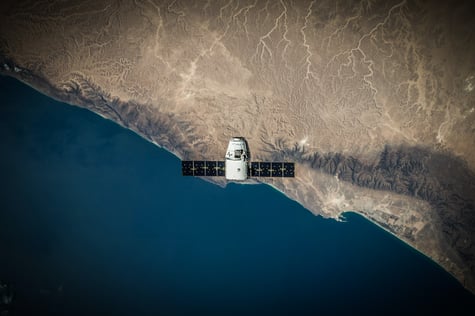When it comes to asset trackers, there are a range of available technologies alongside the popular choice of GPS and GNSS. Asset trackers for cold chain monitoring vary to those used in construction, and as such require slightly different features from their antenna. Because of this, considering each prominent asset tracking technology is valuable to optimise costs and enhance tracking capabilities. But what are the different asset tracker technologies, and what are the features/benefits of each?
Asset tracker technologies
Cellular
Cellular networks consist of base stations that provide coverage to dedicated areas known as cells. These cells make up the entire cellular network of a region, hosting a range of frequency bands for the various cellular technologies (3G, 4G/LTE, 5G). Depending on the region, cellular networks span most populated areas, providing wide coverage for a range of devices.
For asset tracking, cellular presents reliable coverage over a long range due to its widespread infrastructure. That said, the technology and frequency bands used present significant power draw for antenna tracking systems. Moreover, businesses have no influence over the technology itself as it is supplied by dedicated providers.
LPWAN
LPWAN (Low-Power Wireless Access Network) is reminiscent of cellular networks in that they consist of a star topology where devices connect to a single common access point. The main difference between the two is that LPWAN is specialised for low-power IoT devices like asset trackers, whereas cellular is used by a wide array of devices.
As its name suggests, the main benefit of LPWAN networks is its low power consumption due to the narrowband frequency bands of the technology. This enables low-complexity devices to function extremely efficiently on a self-enclosed network, such as with a network of sensors in a car park at an impressive range (15km) depending on the specific frequency band. That said, LPWAN and cellular both have a lack of locational precision that is often required when it comes to asset tracking.
UWB
Ultra-wideband (UWB) is a short-range, high bandwidth wireless technology that offers precise positioning and tracking and highly secure communications. It uses radio waves over a wide frequency bandwidth (6-9GHz) range of the spectrum, and consists of radio wave bursts being transmitted and received; the amount and time it takes for these pulses to travel between the devices is then translated into data.
The wave operation of UWB makes it extremely precise in locational applications such as trackers. It also exhibits good penetration and reliability as it isn’t affected by other RF communications. However, there is a distinct lack of infrastructure surrounding UWB as it is relatively early in development, and also is more power hungry than other wireless solutions. Moreover, it has an extremely limited range, requiring multiple base stations to provide positioning capabilities.
GNSS/GPS
GNSS (Global Navigation Satellite System) describes the various satellite constellations used around the world such as GPS, GLONASS and Galileo. GNSS receivers use signals from multiple satellites in any of these constellations and use trilateration for pinpoint accuracy. GPS (Global Positioning System) refers to a specific type of GNSS which was developed in the 1990s as the world’s first satellite constellation for navigation. GPS receivers use satellites that are from that specific constellation rather than others like with GNSS.
Thanks to the different constellations available, GNSS communications provide precise and reliable location information on a global scale, Moreover, even though there are wireless technologies with greater efficiency, GNSS still has low power draw for devices that have limited battery capacity.
Integrate the perfect wireless solution for your asset tracking device
Each wireless technology presents a range of features that are applicable for different asset tracking devices. That said, GNSS proves to be the best all-rounder, having global coverage, high efficiency and reliable connectivity. But, it needs to work in conjunction with other technology to send back positional data. At Antenova, we offer a range of GNSS modules and antenna solutions that exhibit impressive features, such as our recently launched M20047-1 that works in unison with cellular connectivity.
Made of FR4, M20047-1 offers a predictable, robust solution for devices used in fluctuating temperatures, conditions and environments. In changing temperatures, ceramic and FR4 thermally expands and contracts at different rates, straining solder joints and reducing the useful life of the device. FR4-on-FR4 makes this thermal expansion and contraction more predictable.
Plus, M20047-1 have matching circuits on-board, eliminating the need to spend any time creating a matching network. With this, Active GNSS is less susceptible to detuning, even when embedded within composite plastic housings. Additionally, its LNA and SAW are reversed for optimum performance in applications with cellular modems. To find out more about how M20047-1 can benefit your device design, contact a member of our team today.




